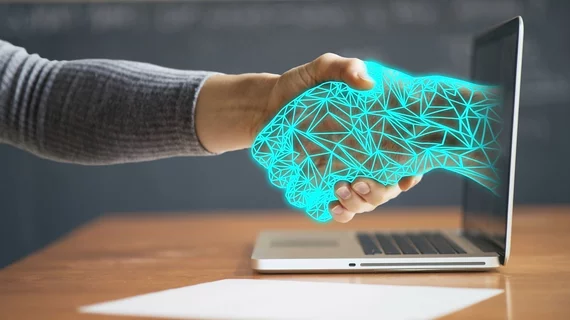A system that combines AI triage with the irreplaceable expertise of radiologists could save practitioners time and stress without sacrificing missed diagnoses in breast imaging.
The new two-part AI system is based on a decision-referral approach and triages mammograms based on quantification of uncertainty. When the system lacks the amount of sufficient assurance required to rule out suspicious findings, it refers the exam to a radiologist. The system’s performance was measured using a retrospective dataset of 1,193,197 digital mammography studies and compared to AI and radiologists as standalone interpreters.
Joint first author of the study Christian Leibig, PhD, of Vara—maker of an AI-powered breast cancer screening platform—in Berlin, Germany, and colleagues shared the results in a recent paper published in Lancet Digital Health:
“The decision-referral approach leverages the strengths of both the radiologist and AI, demonstrating improvements in sensitivity and specificity surpassing that of the individual radiologist and of the standalone AI system.”
The AI system performed well on both internal and external test data but still yielded inferior sensitivity and specificity results compared to unaided radiologists. When the decision-referral approach was implemented radiologist performance improved by 2·6 percentage points in sensitivity and by 1·0 percentage points in specificity.
Additionally, these improvements were reported to be especially significant in clinically relevant subgroups of small lesion sizes and invasive carcinomas.
The authors of the study noted that the system could increase reader accuracy while also decreasing radiologist workloads.
“This study has provided evidence to continue on the path towards widespread and safe clinical adoption of AI-based systems for breast screening.”
More on AI in breast imaging:
AI model outperforms rads at distinguishing malignant from reactive lymph nodes on US
Malignant architectural distortion ably diagnosed on breast imaging by human-AI combo
AI-based mammo screening protocol reduces radiologist workload by 62%
DBT-based radiomics nomogram predicts lymphovascular invasion in breast cancer patients
The full study details can be found in Lancet Digital Health.
For more information on Vara, click here.

